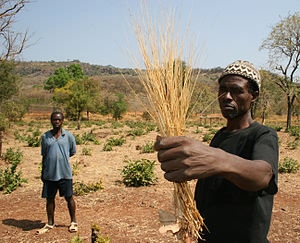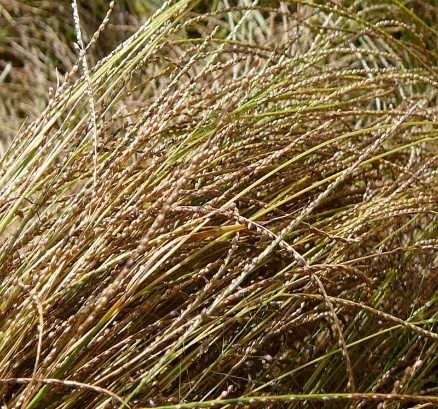पोषक तत्वों से भरपूर परन्तू कम प्रचलित अनाज: फोनियो बाजरा
Fonio (Digitaria exilis), also referred to as white fonio or fonio millet, is one of the oldest cereal crops domesticated by farmers in West Africa. Its cultivation seems to have started about 7000 years ago.
Fonio species belong to Poaceae family, sub-family of Panicoideae, tribe of Paniceae and the genus Digitaria. Fonio grains are extraordinary tiny with 1,000 grains weighting 0.5-0.6 g.
Fonio is often consumed in West Africa. It is one of the world’s fastest maturing cereals. It is believed to be one of the oldest cereals in West Africa, where it is indigenous.
In some parts of Africa, like in regions of Mali, Burkina Faso, Guinea and Nigeria, it is a major part of the diet and in some places in Guinea it is even considered the staple.


Growth and Harvest:
Fonio is tolerant to soil stress and seasonal droughts. It is able to be grown on poor, shallow, sandy, or rocky soils, where other cereals cannot grow. It thrives in rainy seasons only if the soil has good drainage, but will grow in very poor, sandy, or ironstone soils.
Its seeds are rarely sown in rows but scattered about on soil and lightly covered. The seeds germinate within a week after planting. Plants grow to about 50cm tall, and flowering starts about 6 to 8 weeks after emergence.
The grains are ready to harvest between 60 and 120 days after emergence. The plants are usually harvested with a knife or a sickle, tied into sheaves, dried and stored under cover.
 Productivity:
Productivity:
The crop yields about 600-800 kg/ha, but have reached over 1,000 kg/ha. However, poor yields can only yield 150-200 kg/ha and are obtained with poor weeding.
Farmers may recollect seeds after harvesting, but the seed loses its viability after two years. The reason its yield may be so low is that it has such a tiny grain, and it takes a lot of them to weigh any appreciable amount.
It also shatters at maturity and if it is not harvested in time 10-30% of grains can be lost.
Post-harvest processing:
The grain of fonio is difficult to process. Because it is so small, it is difficult to remove from the chaff. Traditionally fonio sheaves are threshed by beating or trampling, and the grains are dehulled in holes (made in the soil) or in a mortar, a difficult and time-consuming process.
With the traditional husking methods, some sand remains with the grain which is partially removed by a long process of cleaning in water before cooking.
Uses of Fonio:
Because of its high methionine content, it is used to feed ruminant livestock like cattle, sheep, goats, and others, which can efficiently digest it. The crop can also be grown for hay and used to build houses or walls and can be burned to provide heat for cooking or ash for potash.
Nutritional benefits:
Fonio plays a critical role for food and nutrition security for several millions of people in African region, especially due to short time life cycle. Besides, its grain it is nutritiously valuable due to the presence of two human-vital amino acids methionine and cysteine, which are absent in other staple food cereals such as wheat, rice, maize, or sorghum.
Some antithyroid properties have been reported due to high flavonoid content in the crude fonio grain. The grains are poor in gluten and beneficial for people suffering from coeliac disease and overweight people, pregnant and breast-feeding women, as well as diabetic people. The husked grain of white fonio has been shown to contain 8% protein, and in black fonio, 11.8% protein.
The difference lies in the amino acids it contains. Fonio also has low sugar content and low glycemic index which ensures less fluctuations in blood glucose and insulin levels, providing beneficial protection against diabetes. It is also rich in iron, with 8.5 mg per serving, meeting at least half of the daily requirement.
Authors
K.Sharmili and P.Rajesh
Assistant Professor (Agronomy), Karunya Institute of Technology and Sciences,
School of Agriculture and Biosciences, Karunya Nagar, Coimbatore - 641 114.
Assistant Manager, J Farm Research Centre, TAFE, Kelambakkam, Kanchipuram - 603 103.
Email:
